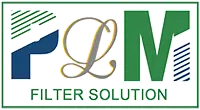8 月 . 23, 2025 01:40 Back to list
Premium Active Carbon Air Filter for Air Purifier | Odor & VOC Removal
Elevating Air Quality: The Imperative Role of Advanced Filtration Technologies
In an era defined by increasing environmental consciousness and stringent health standards, the demand for superior air purification solutions has never been more critical. For B2B decision-makers and engineers, understanding the core technologies driving these solutions is paramount. This comprehensive analysis delves into the intricate world of advanced filtration, with a particular focus on the active carbon air filter for air purifier, examining its technical underpinnings, application versatility, and strategic significance in maintaining pristine air quality across diverse industrial and commercial environments.
As urban pollution levels rise and indoor air quality (IAQ) becomes a primary concern for health and productivity, the efficacy of air filtration systems directly impacts operational efficiency and occupant well-being. From volatile organic compound (VOC) removal in manufacturing facilities to odor control in commercial spaces, the precision and reliability of filtration media are non-negotiable.
Industry Trends & Market Dynamics in Air Filtration
The global air purification market is experiencing robust growth, driven by escalating pollution, heightened public health awareness, and increasingly strict regulatory frameworks. Industry analysts project the market to exceed $20 billion by 2027, with activated carbon playing a pivotal role due to its exceptional adsorption capabilities. Key trends include the integration of multi-stage filtration systems, the miniaturization of high-performance filters, and the growing emphasis on sustainable and recyclable filter media. The demand for advanced solutions like the active carbon air filter for air purifier is particularly strong in sectors requiring robust chemical and odor removal, often complementing particulate filtration stages.
There's a significant cross-pollination of technologies. For instance, innovations in consumer products like the replacement dyson carbon hepa air filter drive research into more efficient and compact designs that eventually find their way into larger B2B applications. Similarly, the widespread availability of components through global supply chains, exemplified by platforms offering rts aliexpress way compressed air filter solutions, underscores the competitive landscape and the need for manufacturers to differentiate through quality, certification, and customization. The rise of smart buildings and IoT-enabled HVAC systems also necessitates filters with longer service lives and predictable performance, making the material science behind activated carbon more crucial than ever.
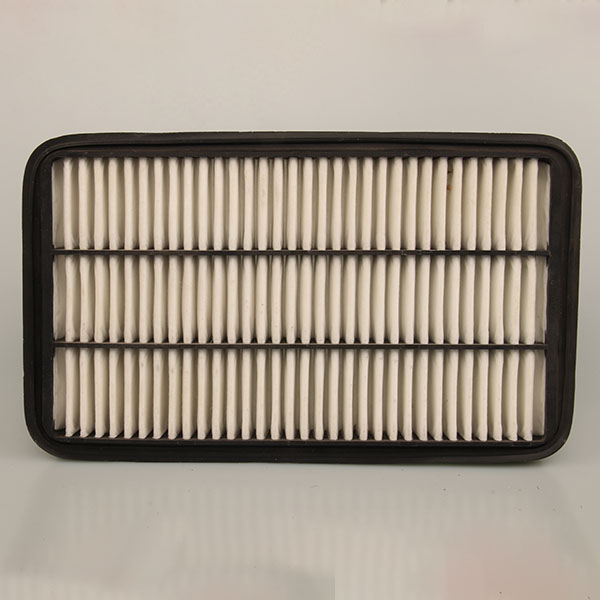
Technical Specifications & Adsorption Principles of Activated Carbon
Activated carbon's unparalleled ability to remove gaseous pollutants stems from its highly porous structure and the phenomenon of adsorption. This process involves the physical or chemical binding of gas molecules to the extensive internal surface area of the carbon. The efficacy of an active carbon air filter for air purifier is primarily determined by several key technical parameters:
- Iodine Number: A measure of the total surface area, indicating the carbon's capacity for adsorbing small molecules. Higher values generally correspond to better performance.
- BET Surface Area: Measured in m²/g, this indicates the total surface area available for adsorption. Premium activated carbons can exceed 1000 m²/g.
- Pore Volume & Size Distribution: The distribution of micropores (less than 2 nm), mesopores (2-50 nm), and macropores (greater than 50 nm) dictates which molecular sizes can be adsorbed. Micropores are crucial for VOCs, while mesopores facilitate faster diffusion.
- Adsorption Capacity: The amount of a specific contaminant (e.g., toluene, formaldehyde) that a given weight of carbon can adsorb before saturation.
- Pressure Drop: A critical operational parameter indicating the resistance to airflow. Lower pressure drop reduces energy consumption in HVAC systems.
- Formulation: Activated carbon can be granular, pelletized, or integrated into a honeycomb activated carbon filter structure, each offering specific advantages in terms of airflow, surface area, and mechanical strength.
Key Performance Parameters for Activated Carbon Media
| Parameter | Unit | Typical Range (Standard Grade) | Typical Range (High-Performance Grade) |
|---|---|---|---|
| Iodine Number | mg/g | 800 - 1000 | 1050 - 1200+ |
| BET Surface Area | m²/g | 900 - 1100 | 1150 - 1400+ |
| Bulk Density | g/cc | 0.48 - 0.55 | 0.42 - 0.50 (for higher porosity) |
| Hardness (Ball Pan) | % | ≥ 95 | ≥ 98 |
| Moisture Content | % (as packed) | < 5 | < 3 |
| Adsorption Capacity (Toluene) | wt% | 20 - 30 | 35 - 45+ |
The selection of the appropriate activated carbon type – coconut shell, wood-based, or coal-based – depends on the target contaminants and desired performance characteristics. Coconut shell carbon, for instance, is known for its high microporosity, making it excellent for smaller VOCs, while coal-based carbon offers a broader pore size distribution for general-purpose applications.
Manufacturing Process Flow of Active Carbon Air Filters
The production of an effective active carbon air filter for air purifier is a multi-stage process, meticulously controlled to ensure consistent quality and performance. Our manufacturing adheres to stringent standards, incorporating advanced techniques to create filters capable of meeting the most demanding B2B requirements.
- Raw Material Procurement & Preparation: Sourcing high-grade raw materials is foundational. This includes selection of suitable carbon sources (e.g., coconut shells, coal, wood) for activated carbon production, and robust filter media materials like melt-blown polypropylene (PP), synthetic fibers, or glass fiber for particulate layers. For specialized applications, impregnation chemicals are prepared.
- Activated Carbon Production (Carbonization & Activation): The carbon source undergoes carbonization (pyrolysis in an inert atmosphere) to remove non-carbon elements, followed by activation (steam or chemical) to develop its porous structure. This process is optimized for specific pore size distributions.
- Filter Media Assembly & Pleating: The activated carbon, whether granular, pelletized, or in a fibrous form, is integrated into the filter structure. This often involves combining it with particulate filter layers (e.g., HEPA, MERV-rated media like merv 8 pleated ac furnace air filter) to create multi-stage filtration. The media is precisely pleated using automated machinery to maximize surface area within a compact design, ensuring optimal airflow and dust-holding capacity.
- Frame & Seal Integration: The pleated media pack is then securely sealed into a durable frame, typically made from plastics (PP, ABS), galvanized steel, or aluminum. Hot-melt adhesive bonding is commonly used to ensure an airtight seal and prevent bypass leakage. This stage is critical for maintaining filter integrity and efficiency.
- Quality Control & Testing: Each filter undergoes rigorous testing protocols. This includes air permeability tests, pressure drop measurements, filtration efficiency testing (e.g., using particle counters according to ISO 16890 or ASHRAE 52.2 standards), and specific gas adsorption tests. Our facilities are equipped to conduct tests conforming to international standards like ISO 9001 and ANSI specifications. Filters are also checked for structural integrity and dimensional accuracy.
- Packaging & Dispatch: Finished filters are carefully packaged to prevent contamination and damage during transit, ensuring they arrive in optimal condition for industrial, commercial, or automotive (e.g., car auto spare parts air filter) applications.
Our manufacturing processes leverage advanced CNC machining for precision frame construction and automated assembly lines to ensure consistency. Typical service life for these filters can range from 6 to 18 months, depending on contaminant load and operating conditions. Target industries include petrochemical processing, metallurgy, pharmaceutical manufacturing, water supply & drainage (for air quality in treatment facilities), and commercial HVAC. Advantages demonstrated in typical application scenarios include significant energy saving due to optimized pressure drop and corrosion resistance from robust material choices.
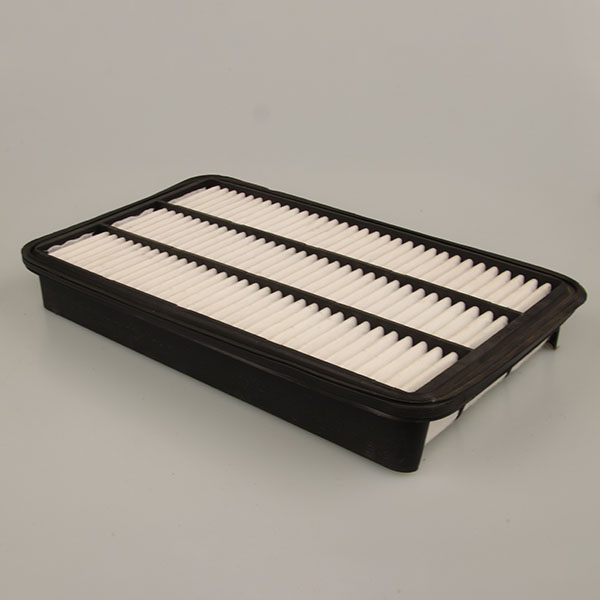
Application Scenarios & Technical Advantages
The versatility of the active carbon air filter for air purifier makes it indispensable across a spectrum of industrial and commercial applications where gaseous contaminants pose a threat to health, equipment, or product integrity.
- Commercial & Residential HVAC Systems: Essential for improving Indoor Air Quality (IAQ) by removing odors (e.g., cooking, human bio-effluents), VOCs from building materials, and trace chemical pollutants in offices, hotels, hospitals, and homes. This enhances occupant comfort and well-being.
- Cleanrooms & Laboratories: Critical for maintaining ultra-clean environments by adsorbing airborne molecular contaminants (AMCs) that could compromise sensitive processes or experiments, particularly in semiconductor manufacturing, biotechnology, and pharmaceutical production.
- Industrial Fume & Odor Control: Employed in various industries (chemical, food processing, waste treatment, printing) to eliminate noxious fumes, solvent vapors, and process-generated odors, ensuring regulatory compliance and a safer working environment.
- Museums & Archives: Used to protect sensitive artifacts and documents from corrosive gases like sulfur dioxide, hydrogen sulfide, and ozone, which can cause irreparable damage over time.
- Data Centers: Safeguard critical electronic equipment from airborne corrosive gases (e.g., hydrogen sulfide, chlorine, sulfur dioxide) that can lead to hardware failure and costly downtime.
The technical advantages of integrating high-quality activated carbon filters are significant:
- Superior VOC and Odor Removal: Effectively adsorbs a wide range of organic compounds and unpleasant odors that particulate filters cannot capture.
- Enhanced Equipment Protection: Prevents corrosion and damage to sensitive machinery and electronics caused by acidic or reactive gases.
- Compliance with Air Quality Regulations: Helps facilities meet increasingly strict environmental and occupational health standards.
- Improved Health & Productivity: By removing airborne irritants and pollutants, these filters contribute to a healthier indoor environment, reducing sick building syndrome symptoms and boosting employee productivity.
- Versatility in Multi-Stage Systems: Can be effectively combined with particulate filters, such as f5 f6 f7 f8 f9 pocket air filter or HEPA filters, to create comprehensive air purification solutions addressing both gaseous and particulate matter.
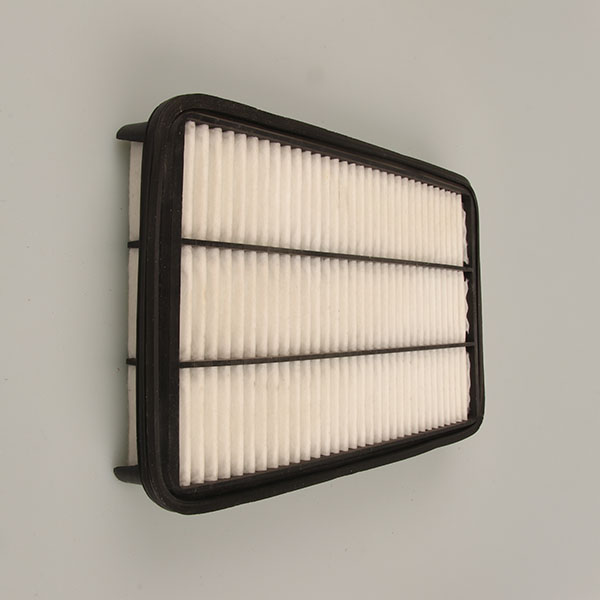
Product Showcase: Car PP Air Filter 1780174060
While this article primarily focuses on the specialized domain of active carbon air filter for air purifier applications, it is important to highlight our broader capabilities in precision air filtration. Our product range extends to various critical filtration needs, including automotive applications, demonstrating our engineering prowess and commitment to high standards across all sectors.
As an illustration of our manufacturing excellence and material science expertise, we present the Car PP Air Filter 1780174060. This product, designed for specific automotive models (e.g., relevant to oil filter fit for outback legacy svx car or 37010 - auto car engine oil filter contexts, even though it's an air filter), utilizes advanced polypropylene (PP) media to ensure superior particulate filtration for internal combustion engines. Its design optimizes airflow while capturing dust, pollen, and other airborne particles, safeguarding engine performance and longevity. This product exemplifies our rigorous quality control and manufacturing precision, principles which are consistently applied across our entire product portfolio, including our advanced activated carbon solutions.
Car PP Air Filter 1780174060 Specifications
| Parameter | Specification |
|---|---|
| Part Number | 1780174060 |
| Filter Type | Engine Air Filter |
| Media Material | High-Efficiency Pleated Polypropylene (PP) |
| Dimensions (L x W x H) | [Insert Specific Dimensions, e.g., 250mm x 180mm x 50mm] |
| Filtration Efficiency | >99.5% for particles >5 microns |
| Operating Temperature | -30°C to +80°C |
| Applications | Specific automotive models (e.g., Toyota, Lexus) |
| Benefits | Optimized engine performance, increased fuel efficiency, extended engine life |
This detail reinforces our commitment to diverse, high-performance filtration solutions, laying the groundwork for how our expertise translates to sophisticated products like the active carbon air filter for air purifier used in industrial and commercial settings.
Vendor Comparison & Customized Solutions
Selecting the right vendor for an active carbon air filter for air purifier is a strategic decision that impacts long-term operational costs, air quality, and regulatory compliance. Beyond initial price, B2B buyers must evaluate several critical factors:
- Certifications & Compliance: ISO 9001, CE, ASHRAE standards, and specific industry certifications.
- R&D Capabilities: A vendor's ability to innovate and develop specialized solutions for emerging contaminants.
- Material Sourcing & Quality Control: Transparency in raw material origins and robust internal QC processes.
- Testing Facilities: In-house or third-party validated testing capabilities to verify filter performance.
- Customization & Engineering Support: Ability to provide bespoke designs for unique applications.
- Lead Times & Logistics: Reliability in delivery and efficient supply chain management.
- After-Sales Support & Warranty: Comprehensive support and clear warranty commitments.
Vendor Comparison Matrix (Illustrative)
| Feature/Criterion | Our Company | Vendor B | Vendor C |
|---|---|---|---|
| ISO 9001 Certified | Yes | Yes | No |
| Customization Options | Extensive (media, size, frame) | Limited | Basic |
| In-house Testing Labs | Advanced | Basic | External |
| Technical Support | Dedicated Engineering Team | Standard | Minimal |
| Global Delivery Capability | Yes | Limited regions | No |
Customized Solutions: We understand that off-the-shelf filters may not always meet specific application challenges. Our engineering team specializes in developing bespoke active carbon air filter for air purifier solutions, tailoring aspects such as:
- Filter Dimensions & Configuration: Custom sizes and shapes to integrate seamlessly into existing HVAC systems or proprietary equipment.
- Activated Carbon Type & Impregnation: Selection of specific carbon grades (e.g., high-activity coconut shell, acid-washed, or sulfur-impregnated) to target particular gaseous contaminants like H2S, ammonia, or mercury.
- Frame Materials: Use of corrosion-resistant materials for harsh industrial environments.
- Flow Rate & Pressure Drop Optimization: Designing filters to meet specific airflow requirements while minimizing energy consumption.

Application Case Studies: Proven Performance
Our solutions have been deployed in numerous challenging environments, delivering measurable improvements in air quality and operational efficiency.
Case Study 1: Commercial Office Building IAQ Enhancement
A major corporate client sought to address persistent "sick building syndrome" complaints and elevated VOC levels in their newly renovated headquarters. The existing HVAC system relied solely on particulate filters. We implemented a multi-stage filtration upgrade, integrating high-capacity active carbon air filter for air purifier modules after the existing merv 8 pleated ac furnace air filter pre-filtration stages.
- Challenge: High levels of formaldehyde, benzene, and general office odors.
- Solution: Custom-designed modular activated carbon filters with a high iodine number (1150 mg/g) and optimized pressure drop.
- Results: Post-installation monitoring showed a >90% reduction in target VOCs within two weeks. Occupant comfort scores improved by 40%, and energy consumption for the HVAC system remained within acceptable parameters due to optimized filter design.
Case Study 2: Industrial Odor Abatement in a Wastewater Treatment Plant
A municipal wastewater treatment plant faced public complaints regarding pervasive hydrogen sulfide (H2S) and ammonia odors emanating from their facilities. Environmental regulations also mandated strict odor control.
- Challenge: High concentrations of H2S and NH3, requiring robust chemical adsorption.
- Solution: Installation of specialized impregnated activated carbon filters designed for H2S and NH3 removal, featuring a robust honeycomb activated carbon filter structure for improved contact time and reduced pressure drop in their large air scrubbers.
- Results: Ambient air monitoring demonstrated a >99% reduction in H2S and NH3 levels at the facility perimeter. Public complaints ceased, and the plant achieved full compliance with local environmental standards. The filters provided consistent performance for 12 months before requiring replacement.
Trust & Authority: Your Partner in Clean Air
Our commitment to quality, expertise, and customer satisfaction forms the bedrock of our operations. With over two decades of specialized experience in advanced filtration solutions, we are a trusted partner for B2B clients worldwide.
- Certifications: We are ISO 9001:2015 certified, affirming our dedication to consistent quality management. Our products adhere to relevant industry standards, including ASHRAE, EN, and CE directives, ensuring global applicability and reliability.
- Partnerships: We collaborate with leading HVAC manufacturers, industrial engineering firms, and cleanroom design specialists, serving as a critical component supplier for their advanced systems. Our client roster includes Fortune 500 companies in pharmaceuticals, electronics, and automotive sectors.
- Quality Assurance: All our filters undergo rigorous multi-point inspection and testing, utilizing state-of-the-art equipment to verify performance against published specifications and customer requirements.
Frequently Asked Questions (FAQ)
A: Replacement frequency depends on usage intensity, air quality, and contaminant load. For industrial applications, typical service life ranges from 6 to 18 months. We recommend regular monitoring and adherence to manufacturer guidelines for optimal performance.
A: Activated carbon is highly effective against a broad spectrum of organic compounds, odors, and some inorganic gases. However, its efficiency varies by contaminant. For specific or highly reactive gases, specialized impregnated carbons or multi-stage filtration systems may be required. Our technical team can advise on optimal solutions.
A: Standard products typically have a lead time of 2-4 weeks. Customized solutions, depending on complexity and material sourcing, generally range from 6-10 weeks. We provide detailed lead time estimates upon project consultation.
Lead Time & Fulfillment
Our streamlined manufacturing and logistics processes ensure efficient order fulfillment. We maintain a robust inventory for standard filters and prioritize expedited production for custom orders. Global shipping capabilities are available, with comprehensive tracking and customs support.
Warranty & Customer Support
All our products are backed by a comprehensive warranty against manufacturing defects and material failure for a period of [e.g., 12-24 months] from the date of purchase. Our dedicated after-sales support team is available to assist with installation queries, performance monitoring, and troubleshooting, ensuring long-term satisfaction and optimal filter performance.
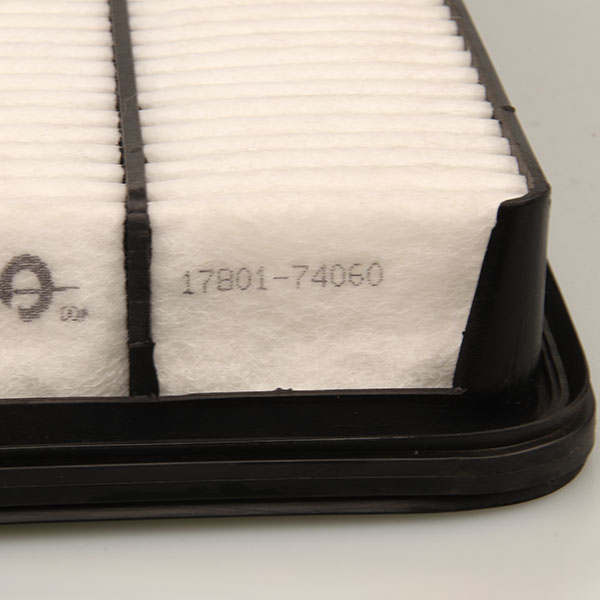
Conclusion: The Future of Clean Air
The role of advanced filtration, particularly the active carbon air filter for air purifier, is indispensable in creating healthy, productive, and compliant environments. As technological advancements continue and environmental concerns escalate, the demand for sophisticated and reliable air purification solutions will only intensify. Partnering with a proven expert ensures access to cutting-edge technology, customized solutions, and unwavering support, safeguarding air quality for the long term. Our commitment to innovation, quality, and customer satisfaction positions us as a leader in delivering the essential components for the future of clean air.
Citations
- U.S. Environmental Protection Agency (EPA). "Indoor Air Quality." www.epa.gov/indoor-air-quality
- ASHRAE Standard 52.2. "Method of Testing General Ventilation Air-Cleaning Devices for Removal Efficiency by Particle Size." www.ashrae.org
- International Organization for Standardization (ISO). "ISO 16890: Air filters for general ventilation." www.iso.org
- American Filtration & Separations Society (AFS). "Activated Carbon Technology for Air Purification." www.afssociety.org
- World Health Organization (WHO). "Air pollution." www.who.int/airpollution
This is the last article
-
Premium Active Carbon Air Filter for Air Purifier | Odor & VOC Removal
NewsAug.23,2025
-
Active Carbon Air Filter for Air Purifier - Superior Odor Removal
NewsAug.22,2025
-
Premium Active Carbon Air Filter for Air Purifiers - Odor Removal
NewsAug.21,2025
-
Premium Acrylic-Resin Air Filter Paper in Roll | High Efficiency
NewsAug.19,2025
-
PLAB-6 A B Two Compounds Filter End Cap Gluing Machine-Hebei Filter Man|Precision Gluing,Automated Production
NewsAug.18,2025
-
PLAB-6 A B Two Compounds Filter End Cap Gluing Machine - Hebei Filter Man Automotive Parts Trading Co., Ltd | Adjustable Gluing Parameters, Automated Precision
NewsAug.18,2025
